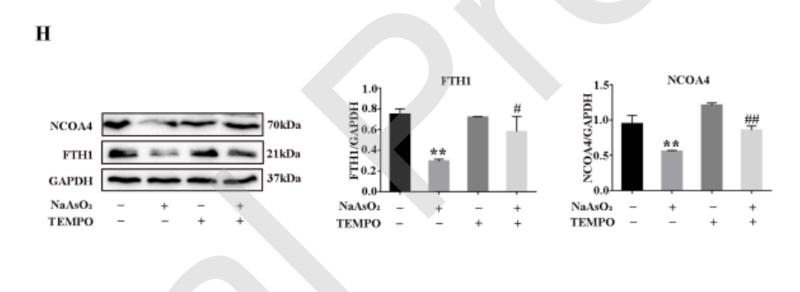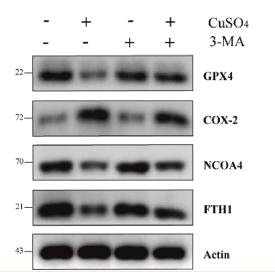产品描述
*The optimal dilutions should be determined by the end user. For optimal experimental results, antibody reuse is not recommended.
*Tips:
WB: 适用于变性蛋白样本的免疫印迹检测. IHC: 适用于组织样本的石蜡(IHC-p)或冰冻(IHC-f)切片样本的免疫组化/荧光检测. IF/ICC: 适用于细胞样本的荧光检测. ELISA(peptide): 适用于抗原肽的ELISA检测.
引用格式: Affinity Biosciences Cat# DF4255, RRID:AB_2836606.
展开/折叠
70 kDa androgen receptor activator; 70 kDa androgen receptor coactivator; 70 kDa AR activator; 70 kDa AR-activator; Androgen receptor coactivator 70 kD; Androgen receptor coactivator 70 kDa protein; Androgen receptor-associated protein of 70 kDa; ARA 70; ARA70; DKFZp762E1112; ELE 1; ELE1; ELE1/ret TK; NCOA 4; NCoA-4; NCOA4; NCOA4_HUMAN; Nuclear receptor coactivator 4; Papillary thyroid carcinoma 3; PTC 3; PTC3; RET activating gene ELE1; Ret activating protein ELE1; Ret-activating protein ELE1; RFG;
抗原和靶标
A synthesized peptide derived from human NCOA4, corresponding to a region within C-terminal amino acids.
研究领域
· Cellular Processes > Cell growth and death > Ferroptosis. (View pathway)
· Human Diseases > Cancers: Overview > Pathways in cancer. (View pathway)
· Human Diseases > Cancers: Specific types > Thyroid cancer. (View pathway)
文献引用
Application: IF/ICC Species: Mouse Sample: GC-2 cells
Application: WB Species: Mouse Sample: GC-2 cells
Application: WB Species: Rat Sample: MIN6 cells
Application: WB Species: Mouse Sample: GC-1 spg cells
Application: WB Species: Mouse Sample: GC-2 cells
Application: WB Species: Mouse Sample: GC-2 cells
限制条款
产品的规格、报价、验证数据请以官网为准,官网链接:www.affbiotech.com | www.affbiotech.cn(简体中文)| www.affbiotech.jp(日本語)产品的数据信息为Affinity所有,未经授权不得收集Affinity官网数据或资料用于商业用途,对抄袭产品数据的行为我们将保留诉诸法律的权利。
产品相关数据会因产品批次、产品检测情况随时调整,如您已订购该产品,请以订购时随货说明书为准,否则请以官网内容为准,官网内容有改动时恕不另行通知。
Affinity保证所销售产品均经过严格质量检测。如您购买的商品在规定时间内出现问题需要售后时,请您在Affinity官方渠道提交售后申请。产品仅供科学研究使用。不用于诊断和治疗。
产品未经授权不得转售。
Affinity Biosciences将不会对在使用我们的产品时可能发生的专利侵权或其他侵权行为负责。Affinity Biosciences, Affinity Biosciences标志和所有其他商标所有权归Affinity Biosciences LTD.

















![Figure 2 HG causes changes in the expression of ferroptosis-related proteins in 661W cells. (A) Western blot analysis of ferroptosis-related protein expression levels in HG-induced 661W cells. GAPDH was used as a control. (B) Expression of GPX4 and SLC7A11 proteins was significantly downregulated in HG-stimulated 661W cells after 12, 18, and 24 h. HG induced obvious upregulation in the expression of ACSL4, FTH1, and NCOA4 in 661W cells compared with the Ctrl group. (C) Immunofluorescence staining of localization of ferroptosis-related proteins (red) and nuclear (blue) in HG-induced 661W cells after 18 h. Data are shown as mean ± SEM, n = 3 per group for Western blotting. p = not significant [ns], * p < 0.05, ** p < 0.01, *** p < 0.001 versus Ctrl group. Scale bar: 50 μm. NCOA4 Antibody - Figure 2 HG causes changes in the expression of ferroptosis-related proteins in 661W cells.](http://img.affbiotech.cn/uploads/202404/594f7e1e7e704c7540b2db16000d29f4.png)
![Figure 2 HG causes changes in the expression of ferroptosis-related proteins in 661W cells. (A) Western blot analysis of ferroptosis-related protein expression levels in HG-induced 661W cells. GAPDH was used as a control. (B) Expression of GPX4 and SLC7A11 proteins was significantly downregulated in HG-stimulated 661W cells after 12, 18, and 24 h. HG induced obvious upregulation in the expression of ACSL4, FTH1, and NCOA4 in 661W cells compared with the Ctrl group. (C) Immunofluorescence staining of localization of ferroptosis-related proteins (red) and nuclear (blue) in HG-induced 661W cells after 18 h. Data are shown as mean ± SEM, n = 3 per group for Western blotting. p = not significant [ns], * p < 0.05, ** p < 0.01, *** p < 0.001 versus Ctrl group. Scale bar: 50 μm. NCOA4 Antibody - Figure 2 HG causes changes in the expression of ferroptosis-related proteins in 661W cells.](http://img.affbiotech.cn/uploads/202404/8f13f6fed02c5691c632952027b287f1.png)




